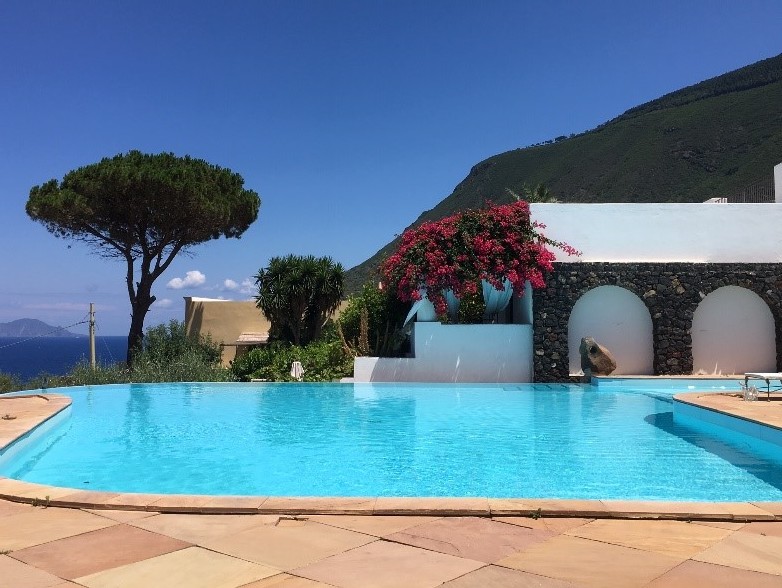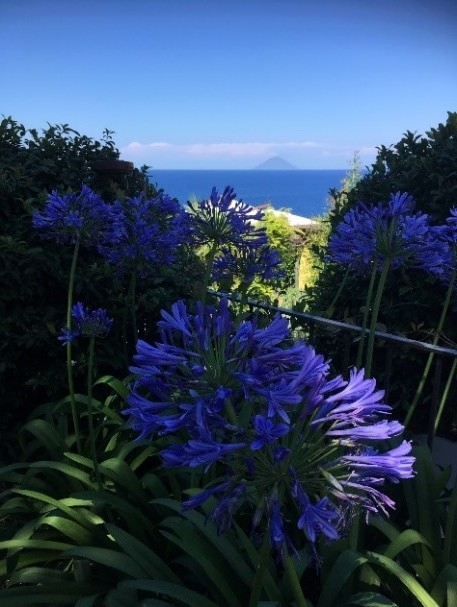Sicily – Salina, Catania, Siracusa and Ortigia
25 June 2018
The second half of our holiday in Sicily began with the ferry from Milazzo to the island of Salina, where we were met by the local taxi service to take us to the other side of the island at Malfa on its northern coast. As the pictures show, the small boutique hotel consisted of individual apartments, pool, spa and massage rooms, set within idyllic surroundings and even a Michelin Star restaurant.
Infinity pool, with a view Stromboli
Bougainvillea
We were able to indulge ourselves for a couple of days that included eating at a restaurant used by the locals. The staff were magnificent, including providing swift first aid for a sudden, life-threatening incident one morning!
Beautiful flora
Generous lunch in Ortigia, near Siracusa
The flora of the island was stunning with lemon trees, flowers and abundant wild capers, for which the island is justly renowned and used liberally in the local cuisine.
However, our itinerary meant we were due to return to Sicily’s mainland and travel by train to the lively city of Catania. Here we were booked for two nights before flying back to Pisa but, at the last minute we decided to take a day trip and journey by train south to the ancient city of Siracusa.
Steeped in ancient Greek history, Siracusa (Syracuse) was once described by the Roman philosopher and statesman Cicero (106BC-43BC) as “the greatest Greek city and the most beautiful of them all”. The city boasts of both an ancient Greek and a Roman amphitheatre, as well an important seaport on the ‘island’ of Ortygia, the historic centre, that is connected to the main city by several bridges. Siracusa was the birthplace of the great Greek mathematician, inventor and scientist Archimedes, arguably the greatest ever and certainly the greatest in classical antiquity. Here we wandered along narrow streets surrounded by old and some modern buildings, built out of gleaming white limestone.
Ortigia had its own street markets, cafes and restaurants where we treated ourselves to an inexpensive, yet substantial lunch consisting of a variety of local dishes. Our limited time did not allow us to explore much of Siracusa, its theatres and other ancient monuments, but we felt sure that next time here, we would also visit the other nearby towns of Ragusa, Modica and Noto in this part of south-east Sicily.




